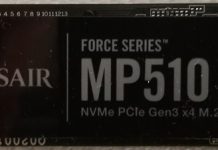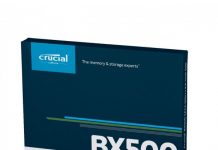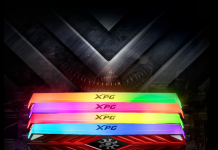|
|
Review: Samsung 840 TLC NAND endurance |
It was my intention to publish this article a couple of
weeks ago, but even the best laid plans can occasionally suffer from unforeseen
circumstances. My plan was to publish this first in a series of articles, which
will examine the predicted write endurance of TLC NAND. As it happened, I was
forced to abandon the tests for a period of nearly two weeks when the heating
system failed in the house during a very cold period of weather. I was still
using the PC occasionally, but not enough to claim that my usage during that
period would be typical.
A new heating system was installed, which entailed a lot of
cleanup work, and while we were waiting on the new heating system, the PC test
suite was just too darn cold to sit in for any length of time. Anyway, enough
of that and back to the article.
Until the Samsung 840 SSD was launched, TLC NAND wasn't
considered to have enough write endurance to be used in an SSD. However, TLC
NAND is not new, and has been used for some time in USB flash drives, where
high writing endurance is not required. A system drive is another matter
altogether, where writes to the drive will increase dramatically compared to writing
the occasional backup data to a USB flash drive. A system drive in a consumer
PC will have to endure somewhere between 5GB to perhaps 20GB of writes per day
depending on usage.
Clearly if TLC NAND is going to be used in a consumer SSD,
it has to have enough write endurance to last the useful lifetime of the SSD,
and this is what this article is all about. Let's first have a quick refresher
on the differences between MLC and TLC NAND.
The NAND MLC vs TLC
MLC NAND, as we know, stores 2 bits of data per cell, meaning
that each cell has four possible states, all of which require a different
voltage to access one of these states. The four possible states for MLC NAND
are as follows.
- 00 (high voltage)
- 01 (medium high voltage)
- 10 (medium low voltage)
- 11 (low voltage)
TLC NAND can store 3 bits of data per cell, and from this
you might expect TLC NAND to have six possible states, but this isn't so. TLC
NAND has eight possible states, and requires eight different voltages to
access, erase, and program the NAND, which makes TLC much more difficult to
program. The eight possible states for TLC NAND are as follows.
- 000 (highest voltage)
- 001 (high voltage)
- 010 (medium high voltage)
- 100 (high medium voltage)
- 011 (low medium voltage)
- 101 (medium low voltage)
- 110 (low voltage)
- 111 (lowest voltage)
With all these different states and voltages required, not
only is TLC more complex, it is also less durable, and it takes longer to erase
the NAND as well.
The NAND used in the Samsung 840 series is Samsung's own SSD
grade 21nm toggle DDR2 TLC NAND, with 400Mbps bandwidth per die.
Samsung's TLC NAND is reckoned to have a write endurance of between
1000 PE/C (program/erase cycles) and 1500 PE/C. When compared to MLC's NAND
write endurance of typically 3000 PE/C, it appears that TLC NAND is a lot less
durable. To enable TLC NAND to last, the SSD controller and firmware must be
optimised to have extremely low write amplification, and thereby make the very
most of the limited write cycles of TLC NAND.
Let's head to the next page where I'll explain the
testing methodology and show the results....

















